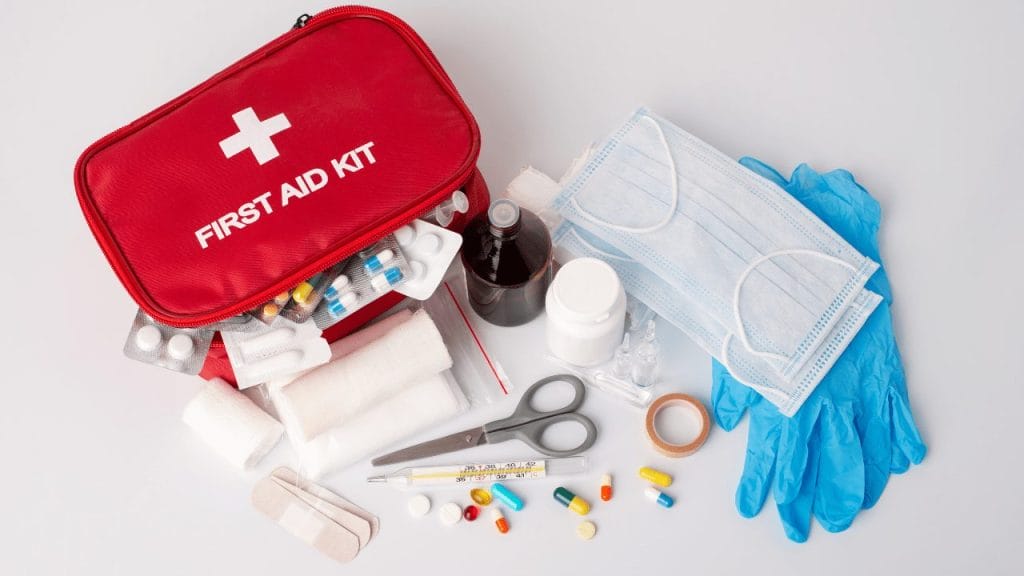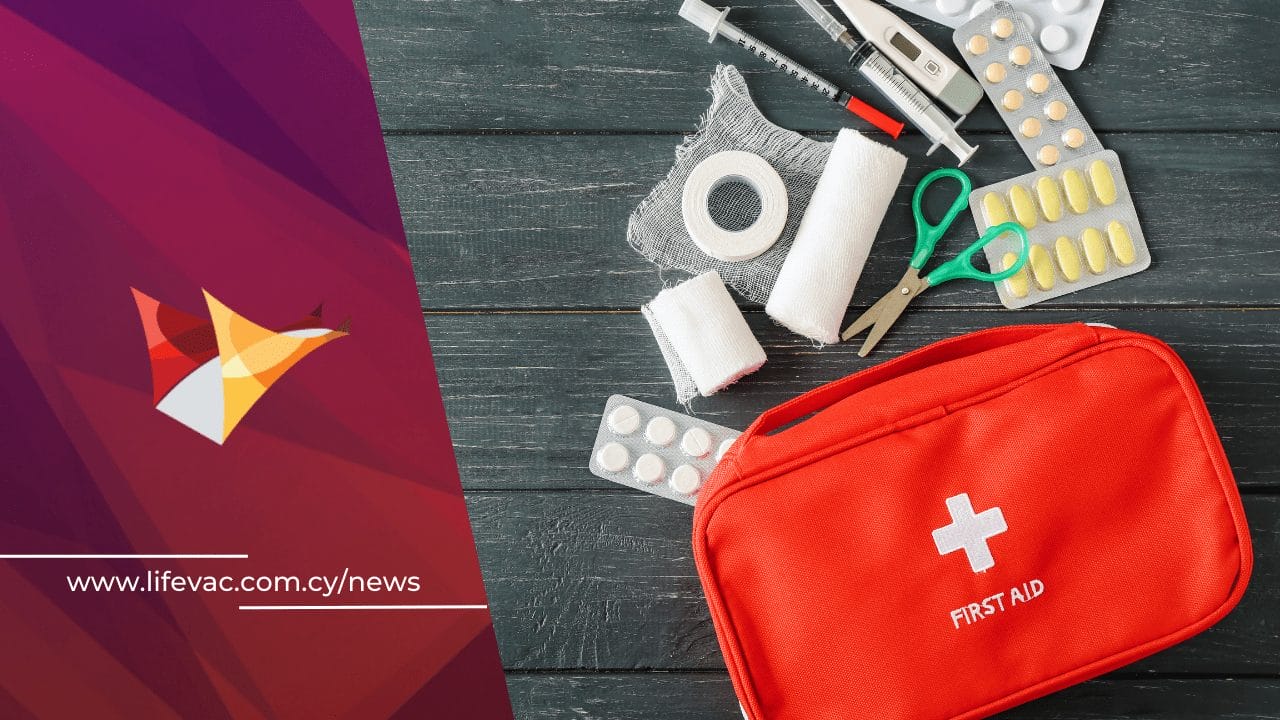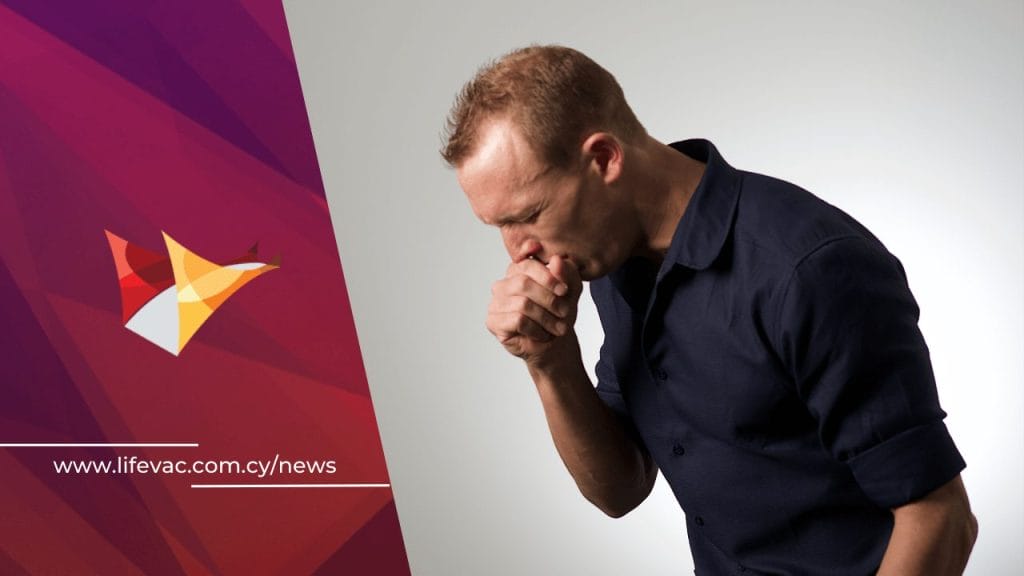A family first aid kit allows you to provide immediate care for minor injuries and emergencies, whether you’re at home or on the go. From cuts and scrapes to burns and stings, accidents can happen anytime, and being prepared is crucial. With the right tools, you can respond quickly and confidently, minimizing panic in stressful situations.
Here, we’ll explain why it’s important to have a family first aid kit, what should be included, and where it should be kept.
Why Is It Important to Have a Family First Aid Kit?
Accidents happen when we least expect them, whether at home, on a day out, or during a family vacation. Having a well-stocked family first aid kit ensures you’re prepared for minor injuries and emergencies.
Whether it’s a scraped knee or an insect bite, a properly equipped kit allows you to react instantly, providing comfort and care until further help is needed. A family first aid kit gives peace of mind, especially when traveling, as you know you can handle minor issues while waiting for professional medical care.

What Should Be in a Family First Aid Kit?
A family first aid kit should be equipped with everything you might need for common injuries and emergencies. Here’s a comprehensive list of items to include:
- Plasters/Band-Aids: Stock up on different sizes and shapes to cover small cuts or scrapes.
- Sterile Gauze Dressings: To dress larger wounds or abrasions.
- Sterile Eye Dressings: Have at least two in your kit to address any eye injuries.
- Bandages: Include crepe-rolled bandages for sprains and triangular bandages for immobilizing injuries.
- Sticky Tape: Micropore or medical tape to secure dressings or bandages.
- Digital Thermometer: For checking fevers or symptoms of illness.
- Disposable Gloves: Sterile gloves protect against infection when treating wounds.
- Alcohol-Free Sterile Wipes: Clean wounds before applying dressings.
- Skin Rash Cream: To relieve irritation from plants or insect bites.
- Antiseptic Cream: Essential for cleaning and preventing infection in minor wounds.
- Cream for Insect Bites/Stings: For immediate relief from insect bites.
- Safety Pins: Use to secure bandages or dressings.
- Tweezers: Useful for removing splinters, stingers, or other foreign objects.
- Scissors: To cut bandages, tape, or dressings.
- Painkillers: Paracetamol or ibuprofen, with an infant version for children.
- Antihistamine: For allergic reactions; keep a small bottle or packet.
- Eye Wash: To remove debris from the eyes safely.
- LifeVac Anti-Choking Device: A critical addition to your family first aid kit, LifeVac can help in choking emergencies when traditional methods fail.
While this list is comprehensive, feel free to add any specific medications or items that your family might require. You can purchase pre-packed first aid kits as a base and customize them according to your needs.

What Should Not Be in a Family First Aid Kit?
Your family first aid kit should only contain items meant for immediate medical attention. Avoid including non-essential medication. Here are things to leave out:
- Non-Emergency Medications: These should be kept separately and not in your first aid kit.
- Damaged or Soiled Bandages: Replace any that are no longer clean or sterile.
- Expired Medications: Ensure everything in your kit is within its expiration date.
- Antibiotics: These should only be used when prescribed by a doctor, especially when traveling.
Regularly check your first aid kit to ensure everything is in good condition and ready to use.
How Often Should First Aid Kits Be Checked?
Since accidents are unpredictable, your family first aid kit should always be stocked and ready. We recommend checking it every three months to make sure items are not expired or missing. Sterile items, medications, and bandages can lose their effectiveness over time, and it’s essential to keep track of anything that may be out of date.
During your checks, make a list of what needs to be replaced and restock accordingly. This way, your kit will always be ready in case of emergencies, whether at home or on a family trip.
Where Should a Family First Aid Kit Be Kept?
Safety is paramount, especially when storing your family first aid kit. Since some items may be harmful if misused, keep your kit in a secure, child-proof place. Lock it in a cabinet or drawer that is out of children’s reach.
It’s also important to store your kit in a cool, dry place to prevent any items from being damaged by moisture. Keeping it in a sealable plastic bag or case is an extra precaution to protect it from water damage.
In addition to your home kit, consider having a smaller, portable first aid kit in your car for day trips or vacations. That way, you’ll always have basic medical supplies handy, no matter where you are.
Conclusion
A well-stocked family first aid kit is essential for handling minor injuries and emergencies at home or on the go. By keeping your kit updated, well-stocked, and stored in a safe place, you’ll be prepared to provide immediate care when it’s needed most.
At LifeVac, we believe in supporting families and caregivers by providing peace of mind in emergency situations.
Including a LifeVac anti-choking device in your first aid kit ensures you’re ready to handle choking incidents quickly and effectively. Learn more about LifeVac and how it can protect your loved ones by visiting our website at www.lifevac.com.cy.



